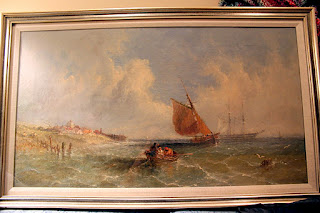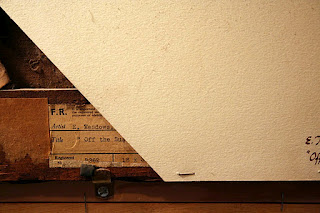In a follow-up to the recent post, “What’s My Art Worth” I think it would be helpful to explain the difference between estimates provided by auction houses and those provided by independent, professional appraisers.
Let’s say you have a landscape painting by a California painter from the 1930s and you want to know what it might bring at auction. You do a little research online and discover that Bonhams & Butterfields has annual auctions in San Francisco for California painting. You go to their website and submit a digital photograph of your painting, its dimensions, where you acquired the piece etc… After a couple of weeks you hear back from them and they are interested in handling the painting in an upcoming auction. They provide an estimate of $3,000-$5,000. It’s important to understand that these estimates are not simply a range of what like paintings have sold for at auction in recent years. Rather these estimates also take into account prospective buyers and what will draw them into bidding on the property. So typically, the estimate will be set low in the hopes that it will attract bidders looking for a bargain. The hoped for scenario is that this will encourage competitive bidding, driving up the price beyond the high end of the estimate.
An independent appraiser compliant with the ethics and standards of USPAP (Uniform Standards of Professional Appraisal Practice) approaches the project from a more objective standpoint. Marketing considerations have no bearing on our analysis. Moreover our fee is set at an hourly or per project rate rather than to the percentage of the appraised value which would obviously lead to inflated valuations. Rather the value conclusion of the painting is derived from an analysis of realized sales of similar properties at a variety of auction houses. Moreover, the appraiser interprets the nuances of the sale to determine why one painting may have sold for significantly more than another similar painting, or why it sold for twice times the estimate, who the bidders were, the history of ownership of the painting etc… The appraiser can also advise you on which auction house would be the best venue for selling your work by evaluating how often artworks by the artist are sold through their showrooms, how successful they have been in realizing realizing high prices relative to other auction houses etc..
For more on professional appraisal practice see the “Art of the Appraisal” in a recent NYTimes article.
http://www.nytimes.com/2011/10/19/business/choosing-experts-to-appraise-collectibles-and-valuables.html



